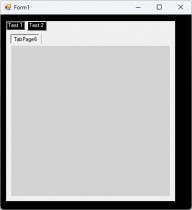Moin! 
Ist es möglich die Farbe von einem TabControl1 zu ändern?
Ich möchte die BackColor = Control Werte ändern.
Aber leider sieht man immer noch diese Control Farbe (Siehe Bild).
Ich hoffe ich könnte es gut erklären.
Weiß jemand, ob dies machbar ist?
BIG THX

rahmenColorBug.zip

Ist es möglich die Farbe von einem TabControl1 zu ändern?
Ich möchte die BackColor = Control Werte ändern.
Aber leider sieht man immer noch diese Control Farbe (Siehe Bild).
Ich hoffe ich könnte es gut erklären.
Weiß jemand, ob dies machbar ist?
BIG THX
rahmenColorBug.zip
Visual Basic.NET 
MS-SQL

MS-SQL


